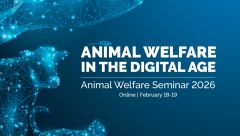Oversupply and wastage
Thousands of horses are bred by the racing industry every year, with many never even making it to the racetrack. Horses may leave the industry at any stage of their lives, from foal right through to post career (which typically only lasts 2-3 short years) and these horses are labelled as ‘wastage’ as they are considered excess to industry requirements. The fate of thousands of horses leaving the industry every year raises serious concerns for their welfare, with many sold on again and again or some being sent to slaughter to be used for pet food. Once they leave the industry, except for those relatively small numbers who are taken into industry rehoming programs, there is virtually no tracking of how they are cared for or what happens to them. Information of the exact destination and number of horses leaving the racing industry is unknown due to a lack of publicly available data.
Painful devices
Whips are routinely used in horse racing, and they inflict pain, localised trauma and tissue damage. In the last 100 metres of a race there is no limit to how many times a horse can be whipped, despite the fact that this is when they are most fatigued and have the least capacity to respond. There’s no evidence that whipping a horse has any effect on how they perform, which makes the use of these devices and the suffering they cause completely unjustifiable.
Tongue ties and spurs are another two common types of equipment used on racehorses which cause discomfort and pain. Tongue ties are large leather/rubber or lycra/neoprene bands wrapped tightly around the horse's tongue and tied to their lower jaw to keep their tongue from moving during a race, and can lead to permanent damage to this sensitive muscle. Spurs are small, spiked metal wheels attached to the jockey’s boots and exert a sharp pressure when the jockey squeezes or kicks their horse. Just like whips, there is no compelling evidence that the use of either of these are effective in anyway except to cause discomfort and possible injury to racehorses.
Increased risk of injury and death
Racehorses run an increased and unacceptable risk of injury and death during training, trials and races they’re forced to run throughout the year. Racing spans both the calendar and continent: over 19,000 Thoroughbred races with horses being placed at risk of injuries such as torn ligaments, muscle tears, fractured bones, or internal bleeding in the lungs. These injuries can cause pain and suffering with many leading to euthanasia due to poor chance of recovery. The exact number of injury and deaths of racehorses each year is not known as the industry does not provide collated statistics.







